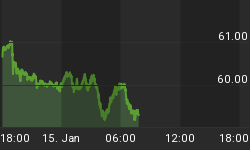With the exception of the NASDAQ 100 and NASDAQ Composite, the major market indices are approaching the May, 2011 highs. This would be a good place for a double top. Investor sentiment is bullishly extreme. Insiders have picked up their selling. The uninterrupted march higher to almost cyclical highs has occurred on so so volume. It all sounds so nice and quaint, and investors only see blue skies ahead. It would be easy to craft a double top scenario, but that would be too obvious. And the market doesn't like obvious. So do we just keep going higher? Maybe. It still pays to embrace the bullishness, but as stated last week, the best gains are clearly behind us. But let's say you want to get more invested. Is now a good time to jump in with both feet? Like that guy on TV, do you just "buy, buy, buy"? That is a tougher call, and one that I don't have the answer to. For an investor who prefers to buy low - when stocks aren't so loved - it is difficult for me to get too excited about the prospects for stocks without some kind of pullback. But that is just me. I see risk rising at these levels. Others see blue skies. I suspect that the coming weeks will be a test of the bullish resolve.
The "Dumb Money" indicator (see figure 1) looks for extremes in the data from 4 different groups of investors who historically have been wrong on the market: 1) Investors Intelligence; 2) MarketVane; 3) American Association of Individual Investors; and 4) the put call ratio. This indicator shows extreme bullishness.
Figure 1. "Dumb Money"/ weekly
Figure 2 is a weekly chart of the SP500 with the InsiderScore "entire market" value in the lower panel. From the InsiderScore weekly report: "Week-over-week, there was very little change in aggregate insider behavior, with sellers continuing to outnumber buyers by about a 4-to-1 ratio." It should be noted that the indicator value is nearing a relative extreme reading as it is ready to move below the lower trading band.
Figure 2. InsiderScore "Entire Market" value/ weekly
Figure 3 is a weekly chart of the SP500. The indicator in the lower panel measures all the assets in the Rydex bullish oriented equity funds divided by the sum of assets in the bullish oriented equity funds plus the assets in the bearish oriented equity funds. When the indicator is green, the value is low and there is fear in the market; this is where market bottoms are forged. When the indicator is red, there is complacency in the market. There are too many bulls and this is when market advances stall. Currently, the value of the indicator is 69.92%. Values less than 50% are associated with market bottoms. Values greater than 58% are associated with market tops. It should be noted that the market topped out in 2011 with this indicator between 70% and 71%.
Figure 3. Rydex Total Bull v. Total Bear/ weekly
















